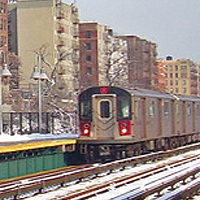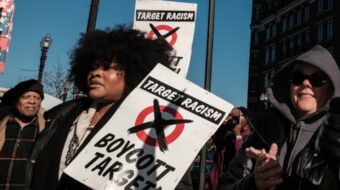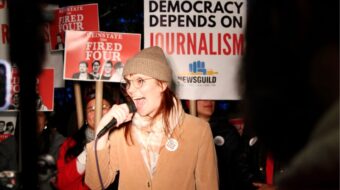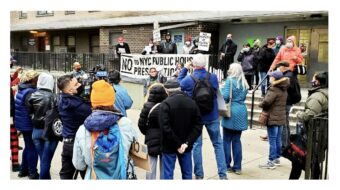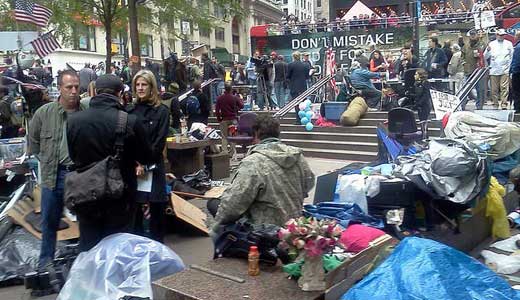
NEW YORK – In New York City hundreds of fed up citizens are occupying a small park in Manhattan’s financial district, the area commonly know as Wall Street. Many of the occupiers carry hand made signs, saying the occupiers represent the 99 perent of the population who are being forced to carry the super wealthy on their backs.
The occupation movement, which seems to have started spontaneously, has attracted mass support because it reflects issues people have been concerned about for quite some time.
Polls now show that the majority of people support the idea that the rich should pay for a crisis they started.
Unlike the observers and commentators who can’t see what is happening below the surface, organized labor and other core progressive forces can and have demonstrated this with numerous displays of solidarity.
I visited the occupation site on Friday afternoon, Oct. 14. On that day, despite off and on rain, the occupiers seemed in high spirits and their resolve seemed unshakable. One observer described the scene best when he called it a kind of guerrilla warfare. Another commentator compared the occupation to the revolutionary atmosphere that infused the twin island nation of Trinidad and Tobago in the 1970’s.
He said that the occupiers were speaking for 99% percent and that one had to respect that. As one of the occupiers himself said, “just being here is important.”
All this goes to the heart of the larger context of the occupation, the popular revulsion with the neo-liberal policies that have led to the crisis and which have caused havoc around the world and a rejection of the notion that the majority of the people must sacrifice because of a crisis they did not cause.
Based on my personal observations, I would say that the occupation can be characterized as organization within a superficial appearance of disorganization.
At the time I visited the occupation site the authorities had allowed the occupiers only one tent, this being for the first aid station. The great majority of the occupiers had to rely on tarps and umbrellas for shelter.
Besides the first aid tent, the occupation site featured, among other things, a press information area, a food service area and an area where a schedule of events was posted. Contrary to some press reports, I observed very little drug use, no fights and no sex.
Among the great number of occupiers there were few identifiable union workers, but this might be expected, since people who are working can’t take a lot of time off to participate. There was a high proportion of union members among the many onlookers and supporters, however. At the time I visited the occupation I noticed that numerous news organizations had a presence there. I saw representatives of NY1 circulating in crowd. In addition there were trucks from News 4, Channel 7, NBC, CNN and Telemundo, among others.
In solidarity with the Wall Street occupation, there were at least two nearby events held that day iin New York City’s Long Island suburb. At one of these, an event organized by “Move On” in the Long Island town of Massapequa, 100 or so people turned out to support the Wall Street occupiers and to call for jobs, for taxing the rich, and for an end tp corporate personhood.
People waved signs attacking the ultra-right-inspired cut backs and, specifically, the ultra-right GOP congressman from the area, Peter King. Similar to the Wall Street occupiers, demonstrators had signs referring to the 99 percent of the population represented by this movement.
The demonstration was held along a busy roadway and, for the most part, received an enthusiastic response from the many motorists who passed by. Circulating through the crowd of demonstrators was a Jobs with Justice petition to save Long Island bus jobs. L.I. Bus is an MTA agency that was privatized by the county’s Republican administration and whose unionized workforce provides transportation services to the residents of Long Island.
Photo: Terry Ballard // CC 2.0


